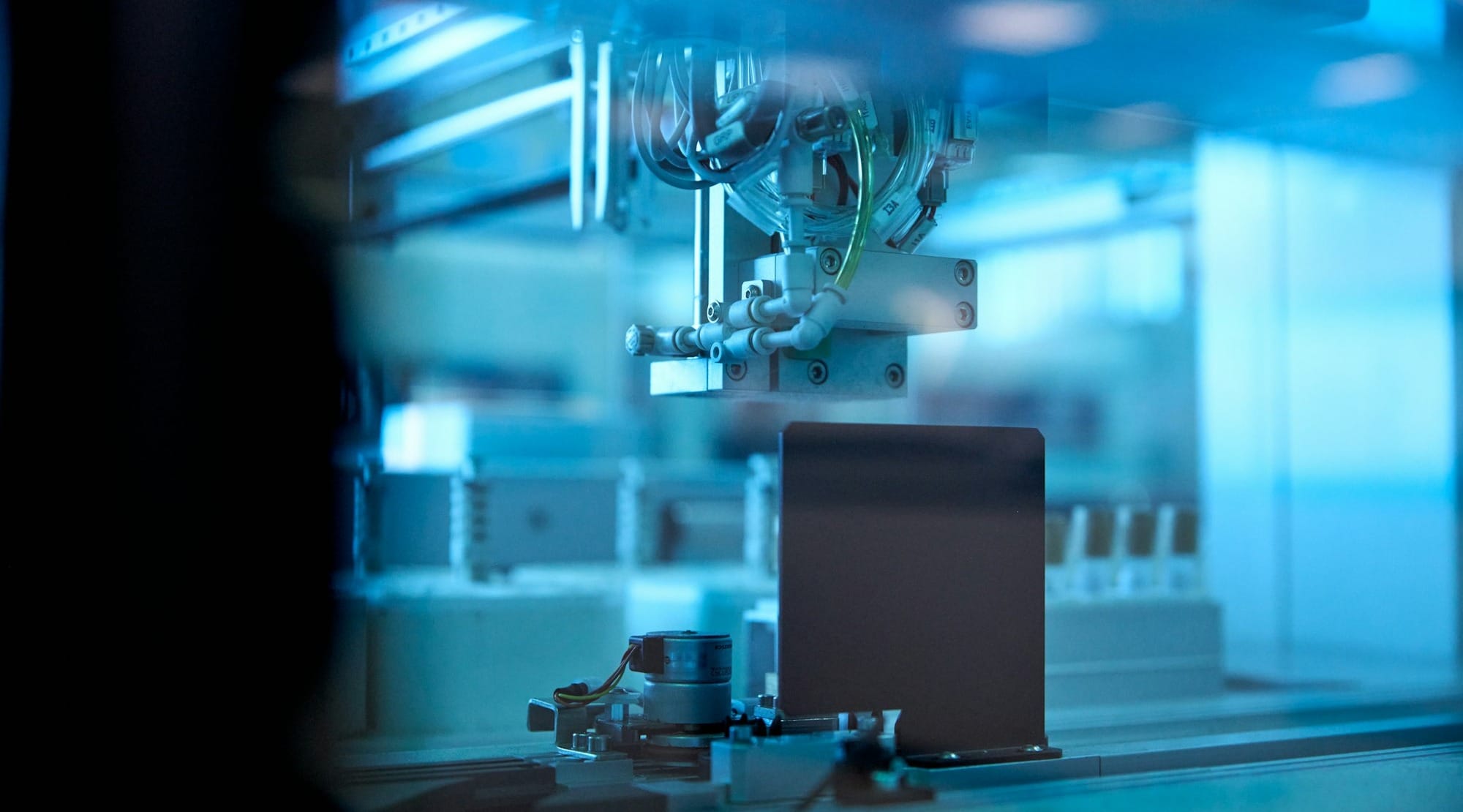Laboratory Developed Test Ruling

Having a background in regulatory affairs, I have an interest in keeping up to date with FDA news. Across the industry, staying up to date with FDA developments is an important skill to have when shaping an understanding of the complex regulatory affairs landscape. One ruling that has generated a large interest in 2024 is the FDA’s Laboratory Developed Test (LDT) ruling.
Through this article, I aim to provide an overview of the LDT ruling and its future considerations. I chose this topic because the ruling was a major development that I got to witness as a fellow. I had opportunities to sit in meetings across different departments and gain different perspectives on this ruling as well as its projected impact. Likewise, I have an interest in seeing how healthcare develops as the FDA progresses through its own advancements. I view the regulatory affairs functional area through the following lens.
A pharmaceutical company needs a strong regulatory affairs team to ensure that its products get to market and stay on market. As a result, staying up to date with FDA news is essential for a product’s success. I followed the same thought when selecting this article topic and discussing the LDT Ruling. Through this article, my hope is that the reader also gains a perspective on and is better equipped to follow this ruling through its enforcement.

To begin, it is important to understand what a ruling is. Two major documents released by the FDA are guidance documents and rulings. Per the FDA, guidance documents represent the FDA’s current thinking on a particular subject. They are not regulations or laws, so they are not enforceable through administrative actions or courts. Rulings are a subset of a regulation that are required and/or authorized by statute. In other words, rulings are a written law. The following links are helpful to understand the difference between guidance documents and rulings as well as explore examples of each.
The LDT Ruling aims to ensure the safety and effectiveness of LDTs by offering more oversight from the FDA. The ruling discusses how the FDA regulates laboratory developed tests, which the agency did not require submission for pre-market review. A laboratory developed test is a subset of an IVD, or invitro diagnostic. According to 21CFR809.3(a), IVDs are,
“…reagents, instruments, and systems intended for use in the diagnosis of disease or other conditions, including a determination of the state of health, in order to cure, mitigate, treat, or prevent disease…Such products are intended for use in the collection, preparation, and examination of specimens taken from the human body.”
The following sources link to the FDA website on IVDs as well as Code of Federal Regulations Title 21 and links directly to 21CFR809.3(a). All chapters of Title 21 are fully explorable through this resource.

At its most basic definition, LDTs are a type of IVD. This is crucial to understand when examining the FDA’s mechanism of adding more oversight to LDTs. Per the FDA, LDTs are,
“…IVDs that are intended for clinical use and designed, manufactured, and used within a single laboratory that is certified under CLIA and meets the regulatory requirements under CLIA to perform high complexity testing.”
The definition also states that IVDs are devices as defined in section 201(h)(1) in the Food, Drug, and Cosmetic Act and may be biological products under section 351 of the Public Health Service Act. This definition tells us that LDTs were not subject to FDA oversight prior to their use in healthcare. This is due to CLIA, the Clinical Laboratory Improvement Amendments of 1988, providing certification for the laboratories in which LDTs are produced. The FDA has lacked applying regulatory authority of LDTs since they were previously developed in highly specialized laboratories with a few, simple tests designed for a small number of people dating back to the 1970’s. Thanks to technology advancements, LDTs have become more complex and can detect more medical conditions. As a result, the FDA has recognized the need to bring more oversight to LDTs.
Released on April 29th, 2024, the LDT ruling went into effect seven days later on May 6th. The mechanism by which the FDA added more oversight to LDTs is by adding one phrase to its definition of IVDs in 21CFR809.3(a). The language within the definition in 21CFR stayed the same but added the one phrase by stating, IVDs are,
“…may be biological products subject to section 351 of the Public Health Service Act, including when the manufacturer of these products is a laboratory.”
In other words, LDTs will now be treated as IVDs and subject to medical device regulations moving forward. The following resources provide the FDA’s LDT Ruling press release and the official LDT Ruling.
The ruling involves many sections including the purpose of the rule and background information such as the FDA’s current regulatory framework and its need for the rule. Similar information has been discussed earlier, and, for the purposes of this article, the phaseout policy and effects on industry will be of focus. With the amendment of the 21CFR809.3(a) definition of IVDs, the LDT Ruling ensures that LDTs will generally be treated as IVDs and be subject to medical device regulations moving forward. This ruling will be enforced in a phaseout approach through five stages across four years. After the fourth year, the FDA will have an enforcement approach ensuring that IVDs manufactured by a laboratory, in this case LDTs, will generally fall under the same enforcement approach as other IVDs. The phaseout policy is listed below:
- Stage 1: At one year after the publication date of the LDT Ruling, the FDA expects manufacturers and laboratories to be compliant with 21CFR820.198 Complaint Files.
- Complaint Files ensure that manufacturers establish and maintain procedures for receiving, reviewing, and evaluating all complaints of a medical device. This includes compliance with medical device reporting, correcting or removing reports, and quality system complaints.
- Stage 2: At two years after the publication date of the LDT Ruling, the FDA expects manufacturers and laboratories to be compliant with requirements not included in other stages of the phaseout including registration and listing, labeling, and investigational use requirements.
- Stage 3: At three years after the publication date of the LDT Ruling, the FDA expects manufacturers and laboratories to be compliant with quality system requirements in 21CFR820.198. This requirement is also addressed in stage 1.
- Stage 4: At 3.5 years after the publication date of the LDT Ruling, the FDA expects manufacturers and laboratories to be compliant with premarket review requirements for LDTs that are high risk under the NYS CLEP classification.
- Stage 5: At four years after the publication date of the LDT Ruling, the FDA expects manufacturers and laboratories to be compliant with premarket review requirements for low- and moderate-risk LDTs under the NYS CLEP classification.

The FDA notes that the phaseout policy applies to IVDs that are manufactured and offered as LDTs by CLIA certified laboratories that also meet the requirements under CLIA to perform high complexity testing. The phaseout policy does not apply to specific IVDs that were excluded from the FDA’s general enforcement approach in the past. The following do not apply to the phaseout policy:
- IVDs include tests intended as blood donor screening, human cells, tissue cells, and cellular and tissue-based donor screening tests required for infectious disease testing under 21CFR610.40.
- These tests do not apply because they are crucial for ensuring safety of blood and blood components, preventing disease transmission, and preventing incompatible blood transfusions that can be life-threatening.
- Tests intended for emergencies, potential emergencies, or threats declared under section 564 of the Food, Drug, and Cosmetic Act.
- These tests do not apply because these situations pose significant patient and public health risks.
- Direct to consumer tests.
- These tests do not apply because the FDA’s general enforcement approach involved the participation of medical professionals to counsel patients on the use, limitations, and interpretation of results from a test intended for consumer use.
Throughout the drafting process, industry had many comments and questions regarding the ruling related to, among others, ongoing and future programs as well as industry altogether. The FDA spent much of the latter half of the ruling responding to industry comments and questions. Please feel free to read the ruling via the link above and provide your analysis. For the purposes of this article, I will examine two discussion points related to what this ruling means for industry. The first involves the necessity for Investigational Device Exemptions, which allows the use of an investigational device in a clinical trial for the collection of safety and effectiveness data. The FDA states that it expects compliance with applicable IDE requirements for investigations involving LDTs two years after the publication date of the LDT Ruling, or Stage 2 of the phaseout policy. This may mean that ongoing clinical development programs and trials that have a completion date over two years from now may face a large impact.

Consider that in some clinical trials, LDTs have been involved in a product’s initial approval or during any subsequent indication approvals. In other words, LDTs have been involved in some product’s approval processes for a long time. Regardless of how long or short this timeline is, all LDTs will be subject to IDE regulations by Stage 2 of the phaseout policy. Adhering to the phaseout policy means that many departments will need to learn, collaborate, and work together to ensure compliance within the next two years. The workload and direction of, among others, researchers, scientists, laboratory workers, clinical development teams, regulatory strategists, biostatisticians, and labeling teams will be impacted within proceeding or initiating clinical development programs. If a program has been utilizing a LDT for multiple years now, how will teams concurrently shift their focus towards adhering to IDE regulations while maintaining success in the programs? Who or what department will oversee this effort? What happens if a sponsor is delayed and submits necessary IDE documents after the FDA’s two year expectation? These are some of the questions I am interested in moving forward.
The second discussion point is how this ruling affects currently marketed LDTs. In the LDT Ruling, the FDA states that LDTs marketed prior to this Final Rule will not be subject to a premarket review enforcement. However, the marketed LDTs are subject to FDA requirements of the Phaseout Policy. The FDA state that it intends to leverage its authority to require labeling submissions for these tests including,
“…test performance and a summary of the supporting validation, among other things.”
The FDA states that this will help the agency closely monitor currently marketed LDTs and identify tests that lack analytical validity, clinical validity, or safety. The FDA stated that it will exercise“targeted enforcement discretion” for currently marketed LDTs supported by the language above, but no policies explaining how it will exercise this are included in the Ruling. This subsequently creates questions for industry. What data falls within performance information? What data falls within a summary of supporting validation? What data falls within, “other things”? How will compliance of these submissions be enforced? What policies will be issued to explain how the FDA will have a targeted enforcement discretion for currently marketed LDTs? I am interested to see how these questions will get answered moving forward.
Overall, the LDT Ruling presents an interesting outlook on LDTs, which have fallen outside of traditional FDA oversight. Industry professionals, hospitals workers, physicians, pharmacists, and nurses are a just a few of the healthcare professionals who will directly see the ramifications of this ruling moving forward. The LDT Ruling will have long lasting effects on clinical trials utilizing entities that fall within the scope of investigational devices and LDTs. From the pharmacy and medical student perspective, it is a fascinating time to see how the FDA interacts with industry to bring oversight to LDTs, an area it has not largely focused its oversight and regulatory framework in before. For pharmacy students in industry rotations, this is a great topic to present on as it is in the early stages of its implementation. The LDT Ruling was of large interest leading up to and upon its release. It will be fascinating to see the guidance documents and polices released as the phaseout policy and implantation of the Ruling develops. Below are applicable FDA webinars for further information.
- FDA Webinar - Proposed Rule: Medical Devices; Laboratory Developed Tests (10/31/2023)
- FDA Webinar - Final Rule: Medical Devices; Laboratory Developed Tests (05/14/2024)
- FDA Webinar - Labeling Requirements for In Vitro Diagnostic Products (IVD), including LDTs, Under 21 CFR 809.10(b) (09/24/2024)
- FDA’s Total Product Lifecycle Approach to In Vitro Diagnostic Products (10/24/2024)
*Information presented on RxTeach does not represent the opinion of any specific company, organization, or team other than the authors themselves. No patient-provider relationship is created.

